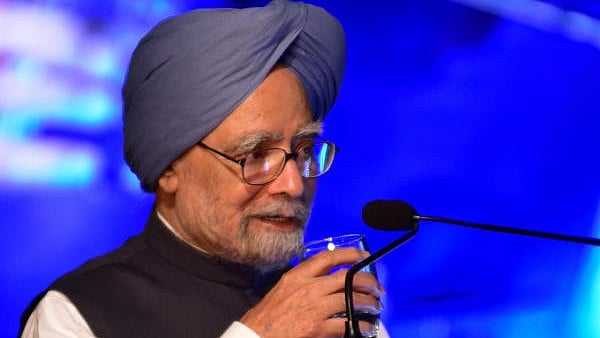
Dr Manmohan Singh
Credit: DH Photo
Much has been written about Dr Manmohan Singh after his demise. Perhaps, had he heard the glowing tributes during his lifetime, he would have been more satisfied, knowing that history indeed had judged him kindlier than it did during his second term as prime minister. Generations will remain grateful to him for steering the economy through crises and for the elegance and dexterity with which he implemented revolutionary policy reforms. To those who knew him closely, Singh was not only a great scholar and policy reformer who saved India from economic collapse but also a simple, self-effacing, and humane individual who constantly thought about the poor and dispossessed.
Before joining the government, Manmohan Singh served as a professor at the Delhi School of Economics, where he held a deep regard for its founder, V K R V Rao. At Rao’s invitation, he visited the Institute of Social and Economic Change (ISEC), the last of the three institutions founded by Rao. As Union finance minister, he sanctioned a grant of Rs 1 crore to institute a visiting professorship at the institute in V K R V Rao’s name. During my tenure as the director of ISEC, I organised a conference in January 2000 to honour Raja Chelliah and invited Singh to be the chief guest. He readily agreed, given his special affection for Chelliah, who was a part of his reform team in 1991, chaired the tax reform committee, and later served as his adviser in implementing the recommendations.
When I went to receive him at the airport, he gently criticised me for wasting my time and asked whether I had prepared the citation for Raja Chelliah’s felicitation. This prompted me to rush back and spend the night drafting it. The conference was scheduled for 9:30 am the next day, but Singh arrived at my office at 8:30 am, explaining that he had overestimated the travel time based on his previous visit. He reviewed the draft, made corrections, and expressed satisfaction with its quality. He stayed on the entire day, attended the evening reception, and was surprised to see Prof U R Rao, former chairman of the Space Commission. On his inquiry, Prof Rao told him that I was his brother, he was curious to know why we had different initials.
Dr Singh visited ISEC again during my tenure to release a biography of V K R V Rao, written by S L Rao. He specifically requested to stay on campus to avoid political engagements. Although the guest house had been recently refurbished, I felt it inappropriate to serve him the canteen food. Instead, I invited him to a family dinner at my home. He asked if it would be a party with other guests, and when I assured him it was a quiet family meal, he agreed without hesitation.
Another interaction with him in Bengaluru occurred in 2002, during a conference on tax reforms organised by the Tax Reforms Committee chaired by former Karnataka Chief Minister Veerappa Moily, where I was a member. After the inauguration, even though other dignitaries left, I was surprised to see Dr Singh attending the first discussion session on the replacement of the sales tax with the value-added tax (VAT). Moily requested that he chair the session, to which he refused and said that he was there only to learn about the VAT. After the presentation, he complimented me on its clarity and reiterated the need for VAT implementation. Thereafter, whenever we met, he discussed VAT and later, the goods and services tax (GST). Although VAT reforms progressed under him, and former Finance Minister P Chidambaram, GST implementation was stalled due to opposition from the then chief ministers of Gujarat and Madhya Pradesh.
When I moved to Delhi in 2003 as the Director of the National Institute of Public Finance and Policy, Dr Singh expressed interest in including me in the economic policy group formed by Congress leader Sonia Gandhi. In 2004, shortly after becoming the PM, he telephoned on a Sunday to request that I join the Planning Commission. Although this did not materialise, he ensured I joined his Economic Advisory Council (EAC), chaired by C Rangarajan. I served as a member from June 2004 to January 2012 before moving to the 14th Finance Commission.
I cherish my interactions with him on tax policy, deficits and debt, and larger development issues. He was receptive and patient, even with criticisms. In a 2008 meeting with a few senior economic administrators, I frankly pointed out the Budget deficit numbers were unrealistic, given the farm loan waiver, implementation of Pay Commission recommendations, and extension of NREGA from 200 districts to the whole country. When he asked for my estimate, I suggested the actual deficit would be double the 2.5% stated in the Budget. This turned out to be accurate, and when off-budget liabilities like oil subsidies were included, the total fiscal deficit rose to 7.5%.
India was fortunate to have Dr Manmohan Singh as Finance Minister during the 1991 economic crisis and later as the PM, overseeing a period of accelerated growth that reached 9% between 2005 and 2008. In the face of mounting criticism in 2014, he expressed hope that history would judge him kindly. Sadly, it is only after his passing that we truly acknowledge his immense contributions and the qualities that defined him.
(The writer is chairman, Karnataka Regional Imbalances Redressal
Committee, Government of Karnataka)